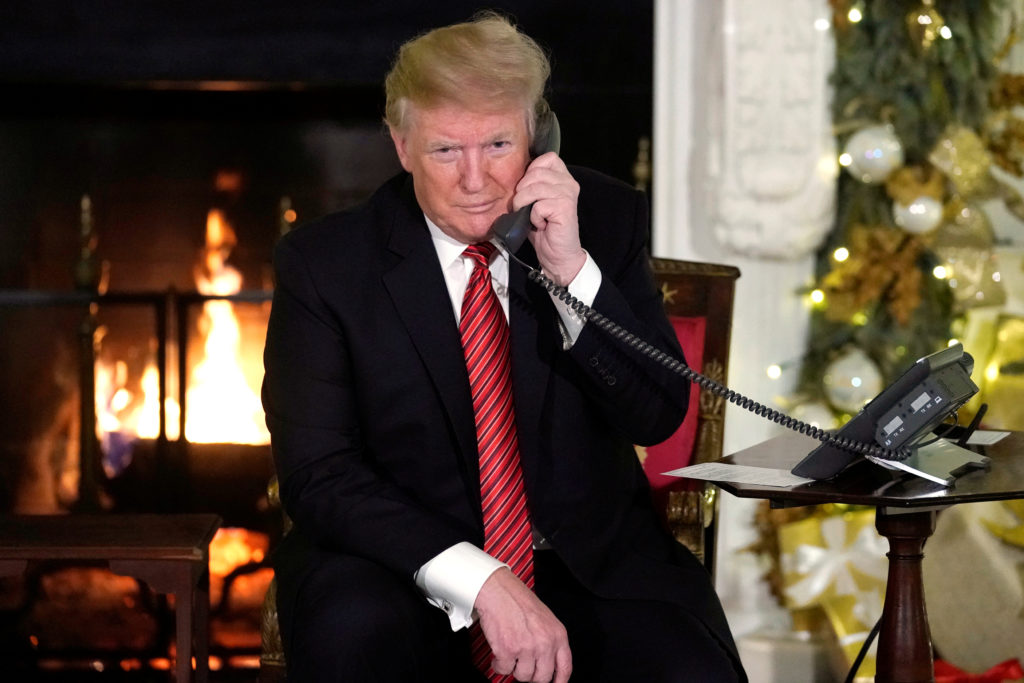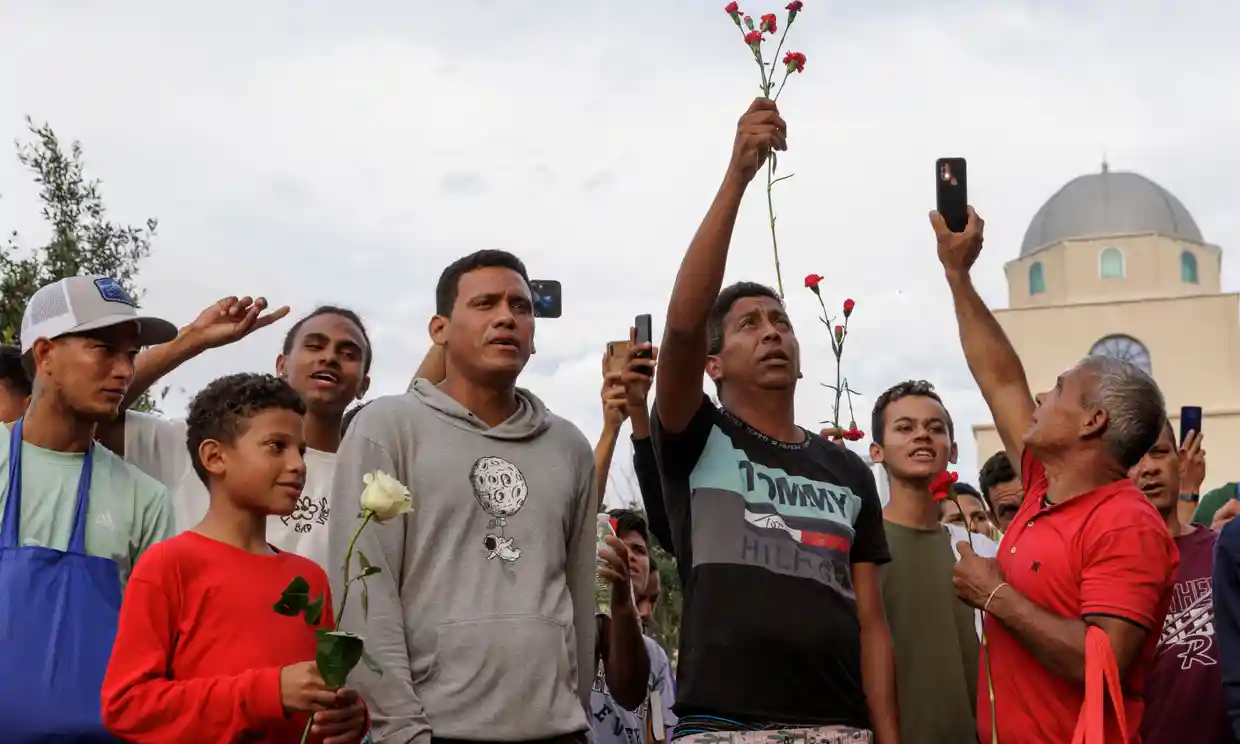
This article is more than
3 year old
Title 42, the Trump-era pandemic public health restrictions that became a key tool officials used to turn back migrants at the US-Mexico border, is set to expire on May 11.
Here are answers to some key questions about Title 42, what’s happening on the ground and what could happen next.
In the early days of the coronavirus pandemic, the US Centers for Disease Control and Prevention issued a public health order that officials said aimed to stop the spread of Covid-19. The order allowed authorities to swiftly expel migrants at US land borders. The policy is widely known as Title 42, for the portion of US code that allowed the CDC director to issue it.
Migrants encountered under Title 42 have been either returned to their home countries or sent back into Mexico. Under the policy, authorities have expelled migrants at the US-Mexico border more than 2.8 million times since the policy began, according to US Customs and Border Protection data.
The policy, which officials have relied on to manage a spiraling situation at the border, is set to end at 11:59 p.m. ET on Thursday.
We’ve known for months that Title 42’s days were numbered.
The policy’s end comes as the Biden administration is ending the Covid public health emergency nationally.
The emergency declaration was the legal underpinning for Title 42’s border restrictions, in addition to a number of other policies.
Officials predict that lifting Title 42 is likely to spur a significant increase in the number of migrants trying to cross into the US.
One reason for the expected spike: Many migrants who were sent back to Mexico under the policy are desperate and losing patience.
Advocates say for many of those who were expelled under Title 42, the situation has been dire.
Since Biden took office, Human Rights First says it’s identified more than 13,000 incidents of kidnapping, torture, rape or other violent attacks on people blocked or expelled to Mexico under Title 42.
Another reason for an expected surge in migrant crossings, according to officials, is misinformation from smugglers who exploit migrants for financial gain.
Speaking to reporters last week, Homeland Security Secretary Alejandro Mayorkas urged would-be migrants not to fall victim to those efforts.
“You are being deceived, and you are risking your lives and your life savings, only to meet a consequence that you do not expect at our southern border,” he said.
“The border is not open, it has not been open, and it will not be open subsequent to May 11,” he said.
Without Title 42 in place, US immigration authorities will return to decades-old protocols at a time of unprecedented mass migration in the Western hemisphere.
Under that system, migrants are either removed from the country, detained or released into the US while their cases make their way through immigration court.
But the Biden administration is also planning several changes that authorities hope will relieve pressure on the border and help officials respond.
The Department of Homeland Security previously released a six-pillar plan that outlined the department’s operations post-Title 42, including setting up additional facilities along the border to process migrants, bolstering transportation and leaning on a fast-track deportation process known as “expedited removal.” Administration officials are still relying on that plan.
In addition, a new regulation expected to go into effect this week would largely ban migrants who traveled through other countries on their way to the US-Mexico border from applying for asylum in the United States.
While there are some exceptions, the new asylum rule would generally apply to migrants who unlawfully cross the US-Mexico border. It would not apply to unaccompanied migrant children.
The planned asylum restrictions have drawn sharp criticism from immigrant rights advocates since they were proposed earlier this year and are likely to face legal challenges.
The administration is also sending an additional 1,500 active-duty troops to the border and leaning on Mexico to help stem migration in part by allowing the US to send certain migrants who aren’t Mexican back across the border..
“We’ve been preparing for quite some time, and we are ready,” Mayorkas said last week, but he also acknowledged that large numbers of migrants are expected at the border.
Politicians on both sides of the aisle and local officials have expressed skepticism that the administration truly is prepared to handle the crisis. Already the number of migrants crossing the border appears to be on the rise, and detention facilities have reached capacity.
In a news conference Monday morning, Republican Texas Gov. Greg Abbott likened the expiration of Title 42 as the laying out of a welcome mat to migrants across the world, signaling America’s borders are wide open.
“It will lead to an incredible amount of people coming across the border illegally,” Abbott said, adding the administration’s policies would “cause a catastrophic disaster.”
The Title 42 border restrictions were controversial from the moment the Trump administration announced them. Immigrant rights advocates argued officials were using public health as a pretext to keep as many immigrants out of the country as possible. Public health experts also slammed the policy, saying it wasn’t justified by the circumstances.
And last year a federal judge sided with them, calling the policy “arbitrary and capricious.”
Republican-led states launched a round of legal challenges after the Biden administration first announced plans to end the policy. And the Supreme Court had said it would weigh in after an emergency appeal.
But US Solicitor General Elizabeth Prelogar argued that case was rendered moot once the administration announced its plans to end the Covid public health emergency. And soon afterward, the Supreme Court removed the case from its calendar.
Some communities are already dealing with an influx of migrants.
Brownsville, Texas, began seeing a spike about a week and a half ago, according to Sergio Cordova, a founder of the non-profit organization Team Brownsville.
The organization has been receiving about 1,000 migrants a day at its center, Cordova said. And while many quickly move on to their next destinations, dozens have slept on the streets over the last week.
El Paso, which declared a state of emergency ahead of Title 42’s expiration, already has about 2,300 migrants living on the streets around two shelters downtown, and some aid organizations worry they won’t have the resources to help everyone if that number grows.
“We’re still able to feed them, but in all honesty, that’s not (a) sustainable operation at this point,” John Martin, deputy director of the Opportunity Center for the Homeless in El Paso, Texas, told CNN on Sunday.
“This is a national issue,” Martin said. “We in El Paso, along with many other communities along the southern border, just happened to be at the front doorstep.”
Concern over Title 42’s end isn’t limited to border states. The issue has become a lightning rod nationally, particularly in cities that have in recent months become the targets for Republican governors and officials in Southern states sending buses of migrants elsewhere.
New York Mayor Eric Adams has been vocal in his calls for more aid, saying the migrant arrivals in his city and others in the Northeast should be handled by the federal government. The financial burden, he said recently, is also taking a toll on the city, which on Friday was awarded $30.5 million from the Federal Emergency Management Agency in humanitarian aid – a fraction of the $350 million the city asked for.
With the 2024 presidential election looming, whatever happens next at the border is sure to face intense scrutiny on the national political stage.
Already lawmakers in Washington are sparring over how to respond.
CNN’s Priscilla Alvarez, Dakin Andone and Rosa Flores contributed to this report.